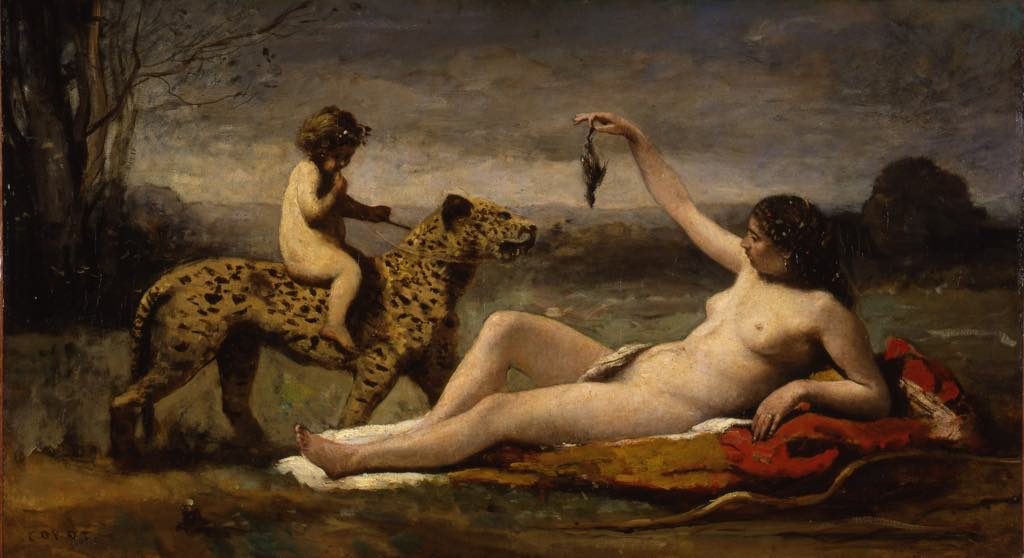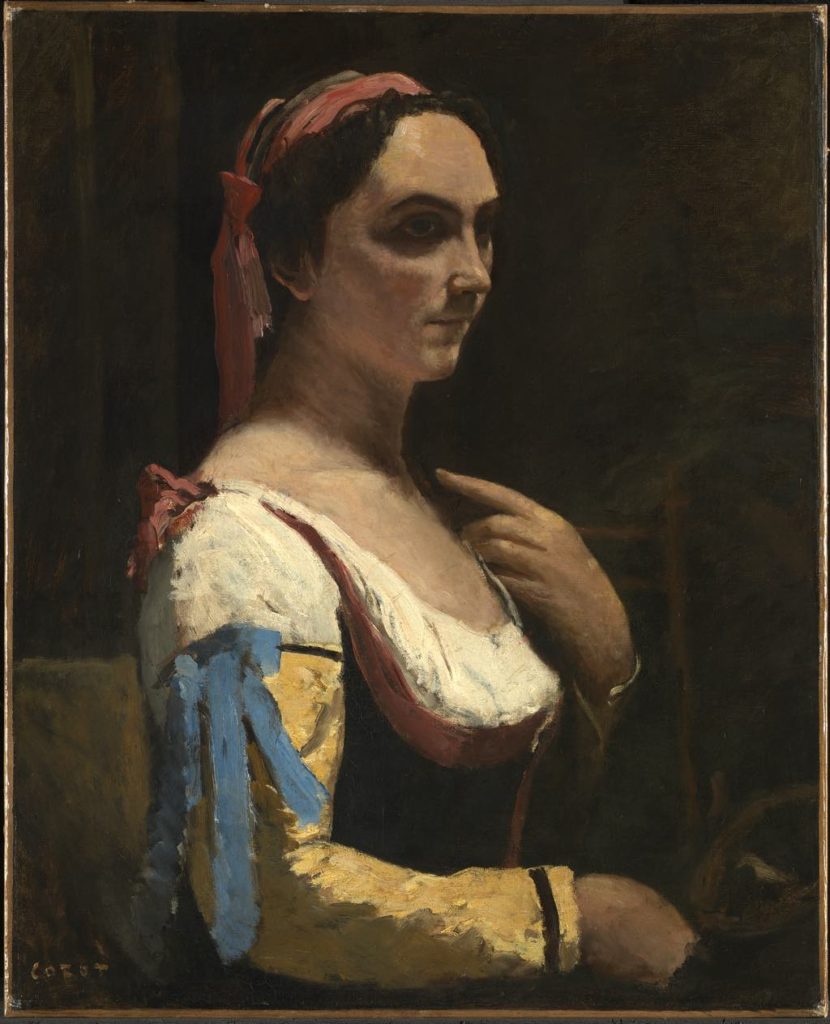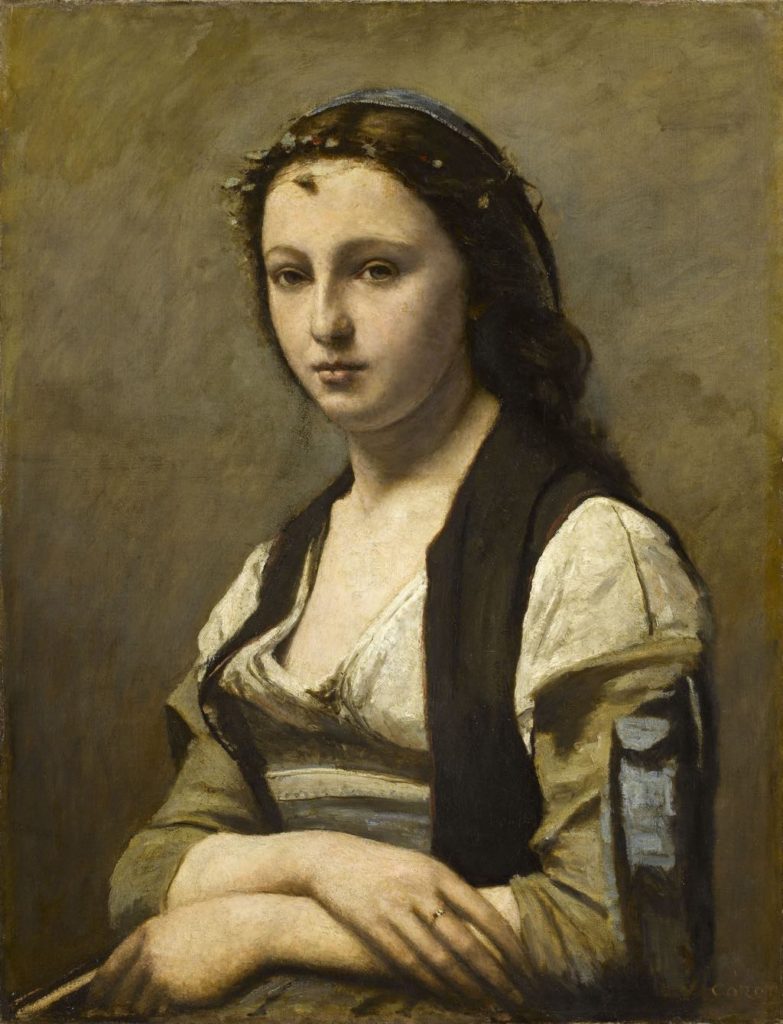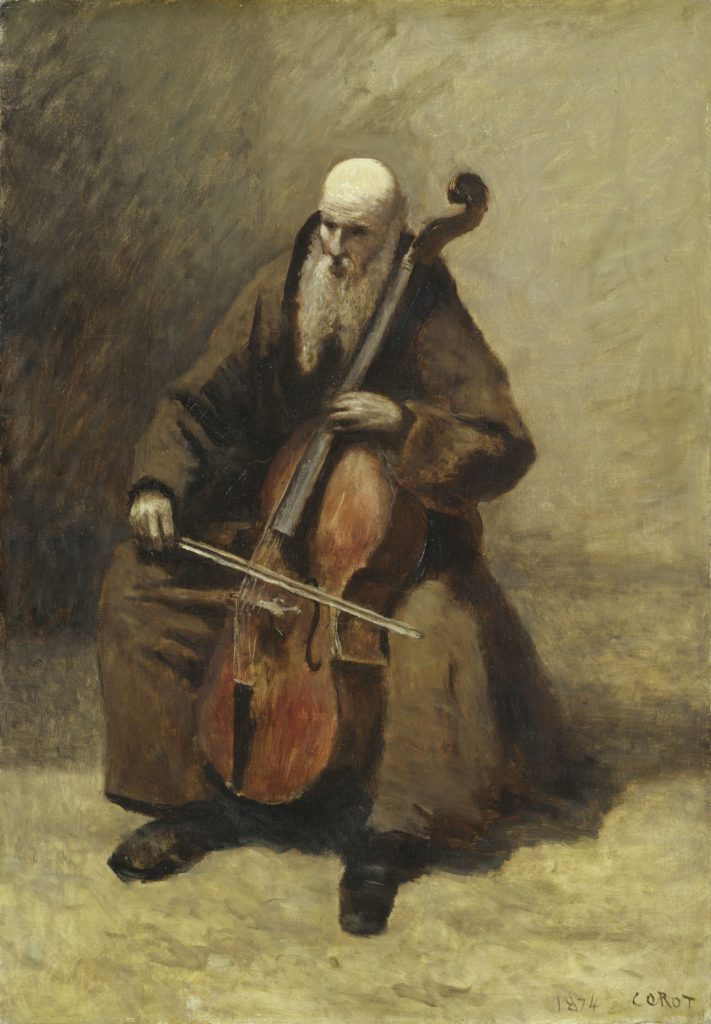
French painter Jean-Baptiste-Camille Corot (1796-1875) is and was in his lifetime known primarily for his brilliant landscapes. The current exhibition at the Musée Marmottan Monet, “Corot: The Painter and His Models” looks at a different side of his work, focusing solely on his paintings of figures.
According to the curators, Corot made a concerted effort toward the end of his life to perfect figure painting, just to prove wrong those who said he was incapable of it. The artist had never been fully accepted by the academic establishment, and this was another attempt to please. In fact, however, figures had almost always appeared in his landscape paintings, whether they were in the Neoclassical or Realist styles, and he did paint portraits – fewer than 50 of them in his entire career – now and then throughout his lifetime. Corot’s friend and colleague Edgar Degas even said that he preferred Corot’s figure paintings to his landscapes.
Quite a few of the portraits in this show were painted in early or mid-career, although many were made more as studies of character types to be used to populate his allegorical paintings than as straightforward portraits. Corot kept many of them in his studio throughout his life.

The earlier works in the show are mostly portraits of relatives and acquaintances. Corot often incorporated landscapes into the background of the portraits, as he did in that of his niece Claire Sennegon and in a touching depiction of the wistful-looking 15-year-old Louise Harduin, whose parents had just died, seated beside a road in a gray traveling dress, the tip of her shoe peeping out from under her voluminous skirt and a big, beribboned straw hat at her side.


In addition to portraits, the show presents nudes, studio character studies and a few oddities. Standouts include the “Italian Woman, or Woman with Yellow Sleeve” (c. 1870), which once belonged to Lucian Freud, one of his larger figure paintings, with its regal pose and bold colors; “The Woman with the Pearl” (c. 1868-70), with her Mona Lisa pose and enigmatic expression (the “pearl” is actually a leaf that is part of her headdress); and the mysterious allegorical painting “Bacchante with a Panther” (c. 1855-60; pictured at the top of the page), in which the voluptuous supine bacchante holds out the corpse of a dead bird to a shy cherub riding on the spotted panther.

Among the figure paintings are several depicting monks in contemplative poses, including the very last painting Corot made, “Monk with a Cello” (1874), just before he died. Perhaps for that reason, I found it very moving, but I also responded to the simplicity and power of the painting itself and the air of intense concentration and solitude it evokes. Some believe that it was a self-portrait of the music-loving artist himself.
By that time he had finally been recognized by the art-world powers and had become famous. He had always been well-off thanks to his parents, who supported his artist’s lifestyle and left him everything when they died. By the end of his life, the genial and kind-hearted Corot had a large group of loving and grateful friends and admirers. He was especially openhanded with his money and often helped starving artists out of their misery. When his friend Honoré Daumier was blind and homeless, Corot bought him a house to live in, just one example of many of his generosity.
This is a rare occasion to see this particular group of works. Don’t miss it.
Favorite